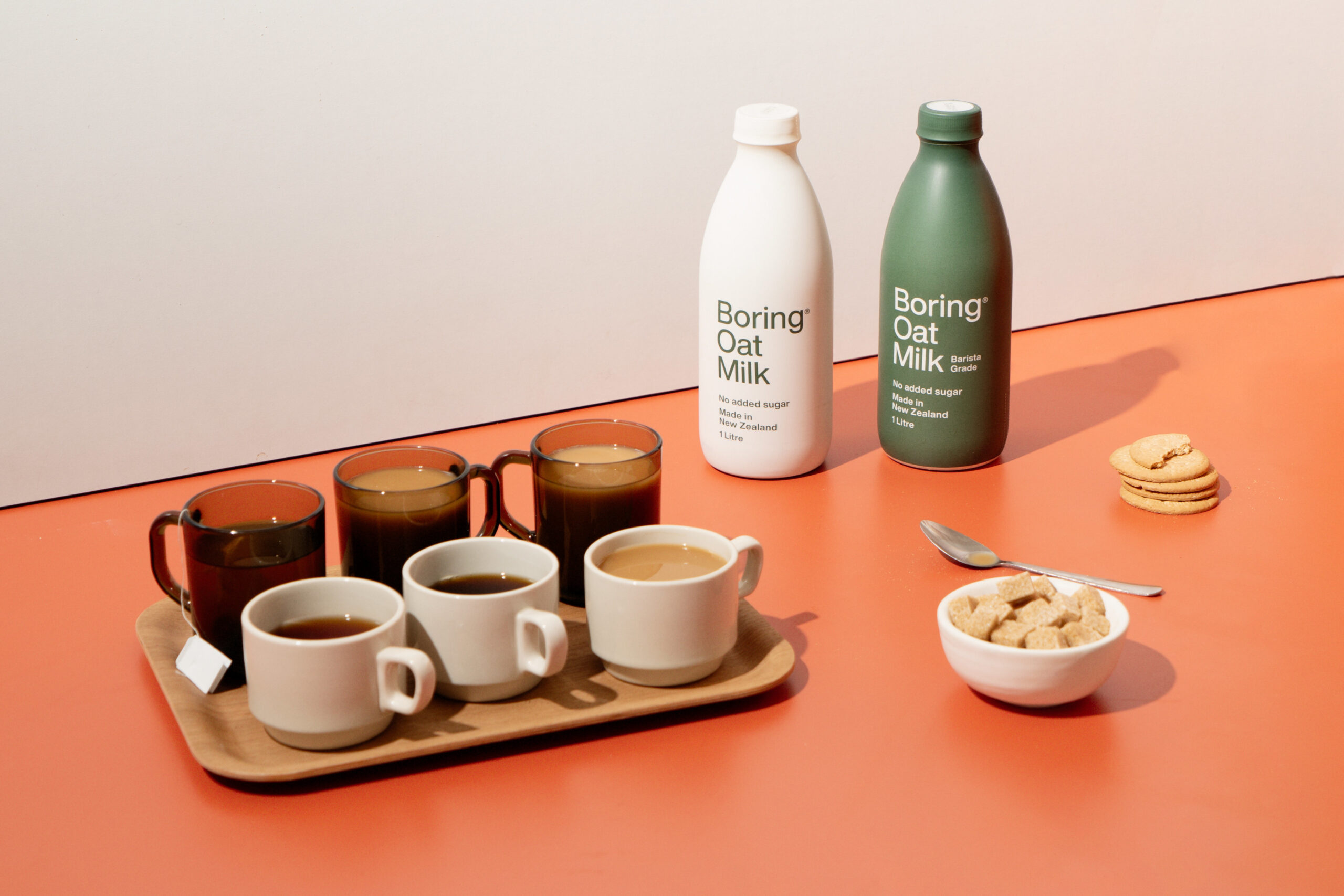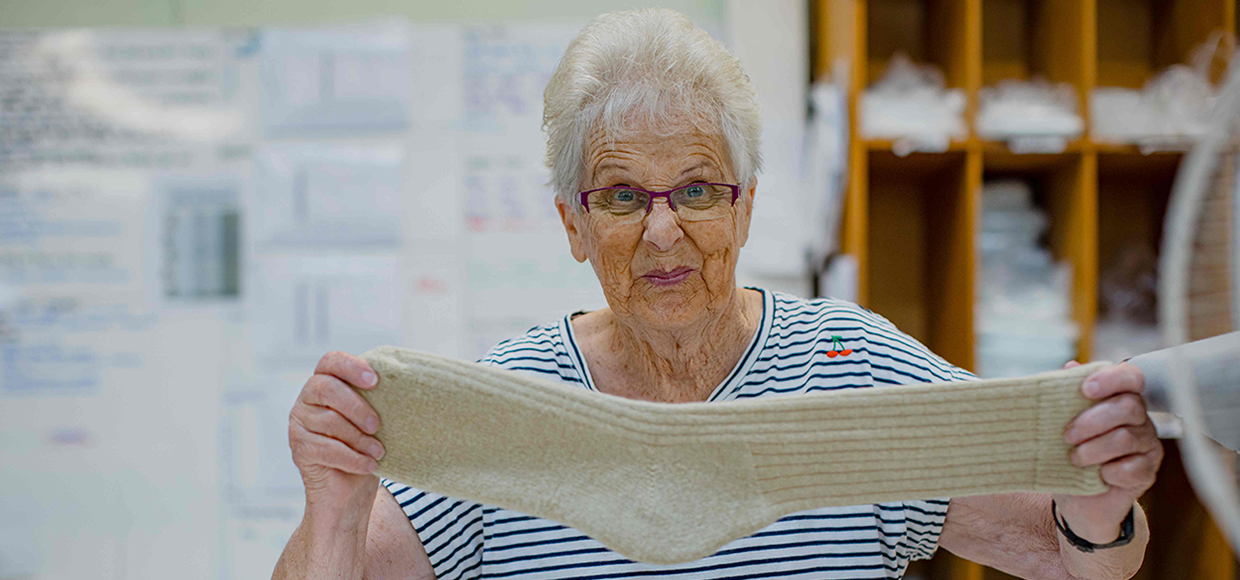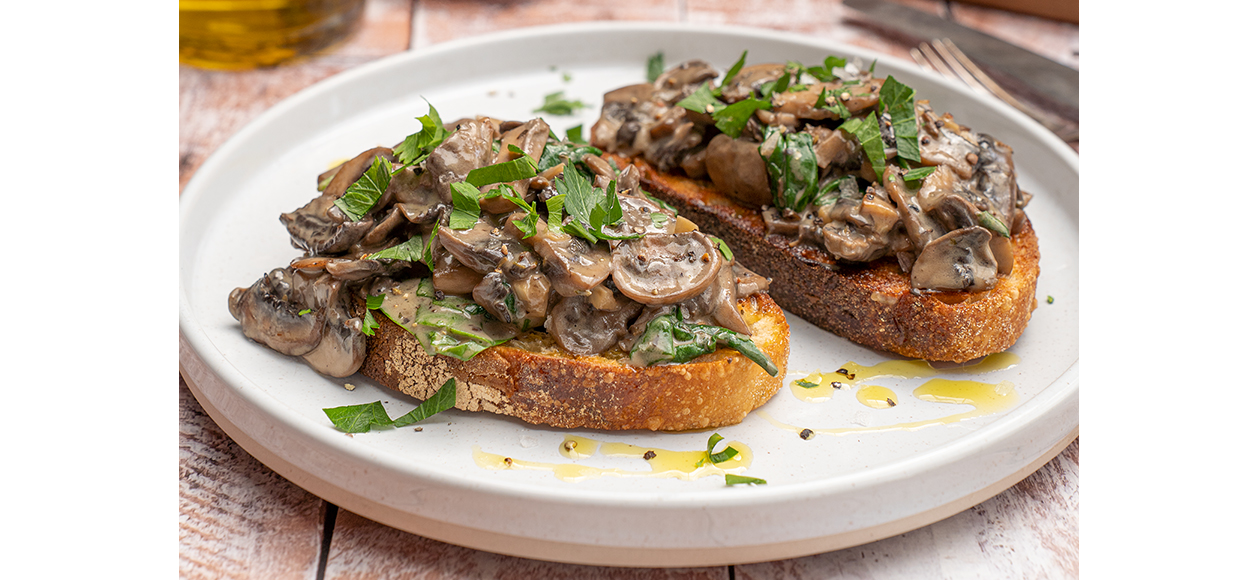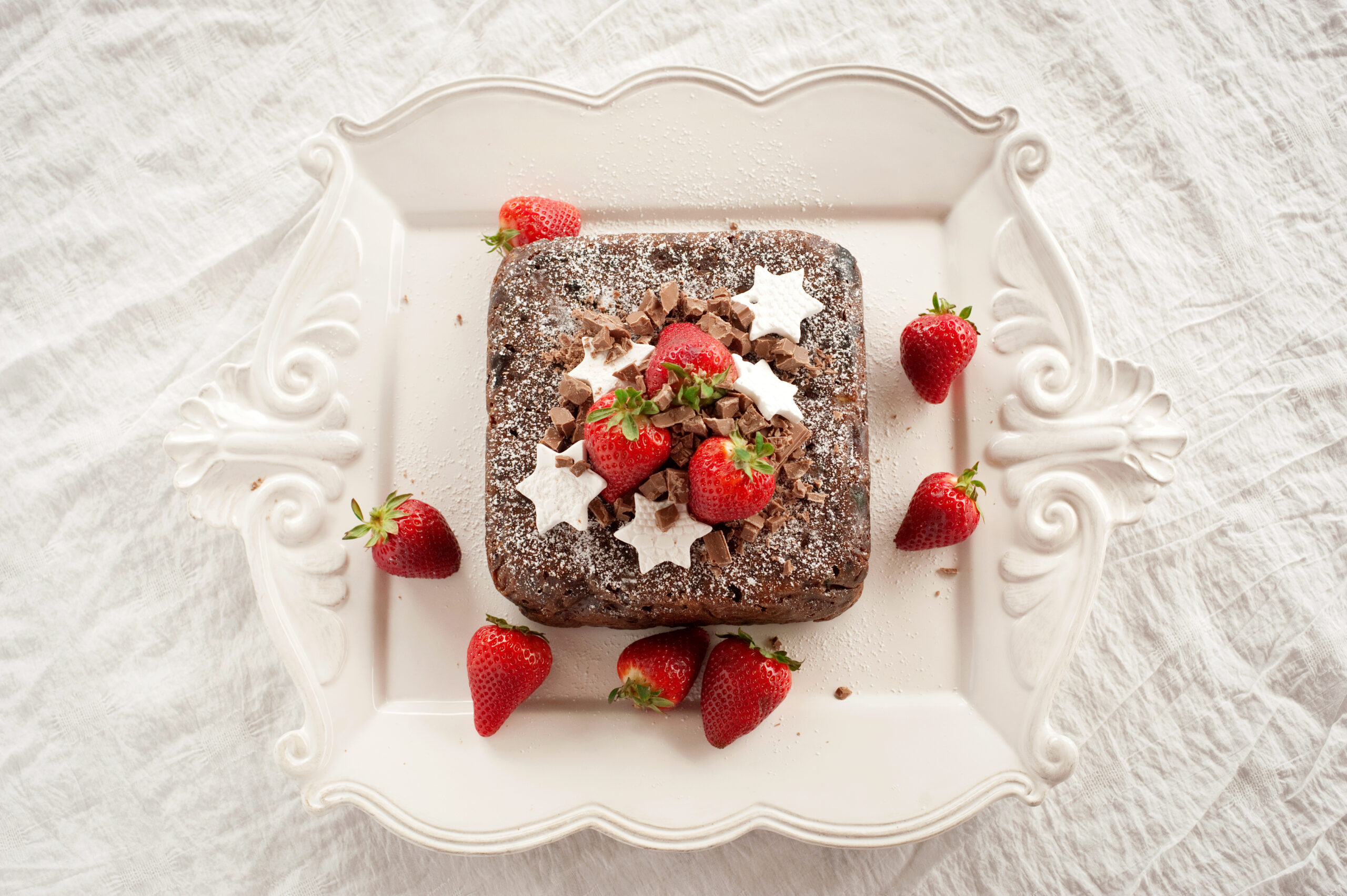How planet-friendly are plant-based milks in New Zealand?
The first time I ever drank oat milk was in a coffee from a Pret a Manger in London. It was Oatly Barista, which I had always liked just for how the carton looked. It frothed convincingly. And it was unexpectedly delicious: rich, full, subtle in flavour and exactly the viscosity of full-fat cow’s milk. I immediately knew I’d never go back.
Plant-based milks (or mylks, m!lks, m*lks or mxxxs, as they increasingly contort themselves) are booming business. Globally, the plant-based milk industry is worth US$12.4 billion and is expected to reach US$22.9 billion by 2027. In New Zealand alone, the dairy alternative industry is worth over $78 million.
On a recent visit to Countdown, I counted at least 40 varieties of plant-based milk, from unsweetened almond to chocolate soy. These milks, previously the purlieu of hardcore vegans only, are now widely embraced by the general public, here and overseas.
More than two-thirds of consumers in the Asia-Pacific and Latin American regions occasionally or always use plant-based milk. And plant-based milks reputedly come with a host of benefits: they’re naturally lactose-free, suiting those with digestive issues, bolstered with all kinds of added nutrients and supposedly better for the environment.
From a taste perspective, I’ll never return to cow’s milk. And I’m mildly lactose intolerant, so plant-based milks make me feel better, too. But the reason I started drinking them was purely environmental.
Recently, I’ve found myself questioning just how climate-friendly they really are. A much-circulated Guardian article found that plant-based milks of all stripes were better for the planet than dairy.
But is that still true in the New Zealand context, where dairy is so readily available? Is it actually more sustainable to drink oat milk flown in from Sweden than cow’s milk that comes from the Waikato?
Well, I discovered, it’s complicated. There are lots of different types of plant-based milk and various environmental costs associated with each one. Let’s take a closer look.
SOY
Soy milk has been present in New Zealand supermarkets for decades and soy is a very sustainable crop overall.
Like all legumes, soy is nitrogen-fixing, meaning it improves soil fertility and reduces the need for fertilisers. Soy is also extremely water-efficient, requiring on average 28 litres of water to produce a litre of milk, versus 628 litres of water to produce a litre of dairy milk – and has a vast range of commercial uses, from tofu to animal feed.
The main environmental cost of soy is the area of land cleared to grow it. Most soy is grown in the US or Brazil – and in Brazil, land is cleared to make space for soy crops on a massive scale.
However, 70 to 75 per cent of the world’s soy is used as animal feed, meaning a reduction in the global appetite for meat would slow deforestation. We already produce more than enough soy to feed the human population.
In New Zealand, a significant proportion of soy milk is made from organic, non-GMO soybeans, which is great.
But it can be difficult to tell where those soybeans are from. Most packets just say something like “made from at least [x]% Australian ingredients”, and New Zealand doesn’t produce its own soy milk.
To choose the most sustainable soy milk, check that the soybeans used were grown outside South America. For example, Sanitarium told me its So Good soy milk is produced using non-GMO soy from China.
RICE
Rice does not take much land to grow – just 0.3m² to grow the rice to produce a litre of rice milk, versus 9m² to pasture and grow the feed for the cows needed to produce a litre of dairy milk.
But rice has a large water footprint, one of the highest of all plant-based milks, and methane-producing bacteria can develop in the rice paddies, adding to greenhouse gas emissions.
Nevertheless, if rice milk is your preference, you can make it a more climate-friendly choice by opting for rice milk produced near home, preferably using organic rice.

ALMOND
Australia is the world’s second-largest producer of almond milk, so most of the almond milk in New Zealand has not travelled far. Almond milk is also not land-intensive to produce, with just 0.5m² of land to grow the almonds needed to produce a litre of almond milk.
But almonds require a vast amount of water to grow, the most of any plant-based milk. Most of the world’s almonds are grown in California or Australia, both hot, dry climates with limited rainfall. One 2019 study estimates that it takes 12 litres of water to grow a single California almond kernel.
An even bigger concern is the toll almond milk production takes on bees. In California especially, millions of bees die every year when they are used to cross-pollinate almond trees and exposed to pesticides.
Nearly 70 per cent of commercial bees in the US are used to pollinate almonds each spring, and in 2019, over a third had died by the season’s end.
In turn, while Australia’s almond orchards are smaller and less industrialised, millions of bees are still needed and suffer the consequences of a massive environmental upset.
Almond milk is certainly not the most eco-friendly choice for these days, particularly as almonds are only a marginal crop in New Zealand. But if almond milk is your favourite, you can make it a more sustainable choice by choosing brands that use Australian, rather than Californian, almonds.
COCONUT
Because coconut trees need only a small amount of water to grow and absorb carbon dioxide, coconut milk is not especially environmentally taxing to produce.
However, coconut trees only grow in tropical areas – a limited landmass – and clearing land for the industrial production of milk can result in rainforest destruction and damage to wildlife ecosystems.
Additionally, while not an environmental issue so much as a social one, pressure to meet the rising global demand for coconut products often causes worker exploitation in the areas where coconuts are grown, such as the Philippines and Indonesia.
To address these concerns, opt for coconut products that are Fair Trade-certified and traceable. In New Zealand, for instance, Little Island Creamery’s coconut is all organic, sourced from Sri Lanka, Samoa and Fiji and ethically produced.
OAT
Oat milk is my top choice of plant-based milk for environmental reasons. Not only is it relatively low in water and land use, oats also act as a “catch crop” for excess nitrogen in the soil, stopping it from polluting waterways.
And when grown in rotation with other crops, oats can help ensure the soil remains rich and fertile.
Oat milk is also currently the only plant-based milk on the New Zealand market where brands exist producing the product with New Zealand ingredients.
Otis Oat Milk’s oats are grown in Gore, processed in Dunedin, then turned into oat milk in Sweden on the appropriate machinery and flown home. But the company says it’s planning to bring oat milk processing machinery to New Zealand as soon as it can, and it currently carbon offsets flying between New Zealand and Sweden by 120 per cent.
The company clearly cares about its carbon footprint – with its website providing long, transparent explanations of how it manages its waste, packaging and transportation for the lowest possible emissions.
Additionally, Tim Ryan, co-founder of Otis Oat Milk, says producing oat milk in New Zealand is about providing a helpful solution for farmers to help diversify their land. “We’ve been the best in the world at dairy, right? But dairy production has got to that industrialised point where it’s affecting the rivers and soils and oceans,” he says.
“The whole idea of Otis is to help diversify land use. We aren’t anti-industrialised dairy but we do think dairy has to be done better, more sustainably. Growing oats helps improve soil health and rebalance some of the issues dairy has caused – so it gives farmers a diverse income stream, offers them a viable alternative to dairy and connects them with one of the fastest-growing consumer groups in the world: plant-based consumers.”
Otis works with NZ Oat Growers Group and around 70 diversified arable farmers – in an arable rotation system, farmers rotate their crops during the seasons and across the years to ensure the soil gets constant variants and remains rich and fertile.
The company has set up “The 1% Fund”, a fund that donates 1 per cent of sales to initiatives that make oats a viable and exciting alternative for NZ farmers.
Boring Oat Milk is another recent Kiwi plant milk start-up with a truly sustainable profile.
Producing oat milk in New Zealand using New Zealand oats, this female-led business grew out of Bonnie Oatcakes, local producers of oatcakes and oat biscuits.
Boring Oat Milk’s product is created using oats grown in the South Island and processed at The Apple Press, a Hawke’s Bay apple juice company – so it’s another good choice for the carbon-conscious.
Beyond Otis and Boring Oat Milk, the other oat milks on the market are nothing to sniff at.
While oats grown in North America are often treated with pesticides and grown in a monoculture environment – meaning crops aren’t rotated to enhance soil fertility – most of the oat milk we can buy in New Zealand is a whole lot more sustainable.
Oatly claims that its oats are glyphosate-free (that is, not sprayed with harmful pesticides) and both the So Good and Vitasoy brands of oat milk are produced just across the ditch using Australian oats.

DAIRY
A 2018 study by researchers at the University of Oxford shows that globally, producing a glass of dairy milk produces on average almost three times more greenhouse gas emissions than any plant-based milk and uses nine times more land than any of the milk alternatives (to grow the cows’ feed and pasture them).
Producing dairy milk is bad for the environment in a whole slew of ways – from the cows belching methane, a greenhouse gas 28-34 times more effective at trapping heat than carbon dioxide, to the massive amounts of water and feed needed to maintain them.
But in New Zealand, the picture looks a little different. Fonterra, the largest milk producer in the country, told me New Zealand’s dairy production emissions are approximately one-third of the global average.
Because New Zealand’s climate is excellent for growing grass, 96 per cent of our cows’ diet is grass rather than grain, so fewer emissions are associated with growing cows’ feed.
Lee Stewart, head of corporate sustainability at Fonterra, also claims that on a nutrient-density basis, New Zealand dairy has a lower carbon footprint than non-dairy alternatives – although plant-based milks are often recommended for health reasons.
For example, oat milk contains a soluble fibre called beta-glucan, which has been shown to reduce cholesterol.
Still, Fonterra acknowledges the fundamental unsustainability of traditional dairy, and their responsibility to reduce emissions.
“We recognise that we have an important part to play in reducing emissions across our supply chain,” says Stewart, “particularly through addressing emissions from fossil fuel use and finding ways to manage and mitigate animal emissions on farms.”
Fonterra plans to have net zero emissions by 2050 and several initiatives are in place to achieve that – including switching to renewable energy sources across its manufacturing operations, working with farmers to develop tailored action plans to improve their environmental footprint and decarbonising the milk collection and distribution networks.
Most excitingly, Fonterra, alongside others in the dairy industry, is funding innovation to reduce on-farm emissions.
A promising plantain trial is underway: incorporating certain plantain varieties into cows’ diets has been shown to reduce the nitrogen concentration in their urine.
Additionally, Fonterra invests in research to find ways to mitigate methane emissions, such as the KowbuchaTM project (which uses probiotics to reduce cows’ methane production).
So, which milk should I drink?
In short, it’s up to you – but any plant-based milk produced with traceable ingredients close to home is currently a better choice than dairy.
As we’ve seen, not all plant-based milk is created equal. There’s often a trade-off: plant-based milk may be water-intensive but land-light; involve an eco-friendly crop but contribute to deforestation.
Compromise is inevitable – and the picture is particularly complicated in New Zealand, because our dairy industry is so much greener than that in the rest of the world.
However, in the long-term, based on current science, plant-based milk is overall a more sustainable choice than dairy. Making it part of your diet is part of a wider commitment to a more plant-based diet – which is unequivocally a more sustainable lifestyle choice.
Obviously, dairy is an enormous industry in New Zealand, supporting thousands of jobs and forming a major part of our national image.
Dairy is our largest export market, worth about $19 billion a year. Dairy might also, in the future, be a lot greener than it currently is, if technologies to reduce animal emissions take off.
But while dairy milk is more sustainable in New Zealand than overseas, it’s still far from being the current greenest option overall.
Ultimately, I would encourage those concerned about their climate footprint to research their plant-based milk options further.
But in the long run, plant-based milks are a growing New Zealand industry and choosing any one is a positive move for the planet at large.
As Michael Pollan famously wrote in The New York Times, you vote for the kind of world you want to live in through the food choices you make: “You can simply stop participating in a system that abuses animals or poisons the water or squanders jet fuel flying asparagus around the world. You can vote with your fork, in other words, and you can do it three times a day.”





